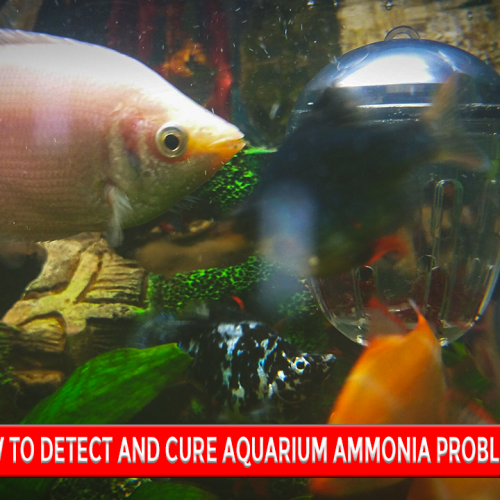Dropsy is an acute condition that affects aquarium fish mostly, and comes with an array of symptoms, which could be distressing to most fish keepers. With the knowledge of early signs and its treatment, your aquarium fish might have an improved chance at recovery. This guide is to explain what is dropsy, how you can identify it, and the best approaches to treat and prevent this condition.
What is Dropsy?
Dropsy is not a disease but a symptom of other diseases afflicting fish. It comes with heavy swelling of the body through fluid collection within the tissues and body cavities. The disease is normally associated with bacterial infections, especially when the fish’s immunity is low because of stress or water quality. If not treated, dropsy usually kills the fish, so any symptoms must be taken seriously promptly.
Common Manifestations of Dropsy
Dropsy might cause a variety of manifestations, which sometimes appear very prominent. Here are some of the common signs to observe:
1. Swelled or Bloated Belly
One of the most outstanding symptoms of dropsy in fish is swollen, bloated belly. The belly appears to be distended like a pinecone due to an accumulation of fluid.
2. Pinecone Appearance
At an advanced stage, the swelling causes the fish’s scales to protrude from its body like a pinecone as a sign that the swelling inside has reached a mass that impacts the internal organs.
3. Bulging of the Eyes (Exophthalmia)
There might be bulging eyes from inside due to increased pressure built up inside the fish body.
4. Loss of appetite and lethargy
Fish infected with dropsy will often become lethargic, losing the energy and activity levels that they would normally have. They can also stop eating.
5. Red or Inflamed Skin
In later stages, the fish might display redness of the skin, mainly around the abdomen or the base of the fins, which are inflamed.
Causes of Dropsy
This is usually the result of a bacterial infection most of which are attributed to a bacterium known as Aeromonas, among others. Some factors predispose fishes to dropsy among these include:
- Water Quality Complications: This can stress the fishes due to high concentrations of ammonia, nitrite, or nitrate levels causing weakening of their immune system.
- Overstocking: It leads to increased loads of waste in the same tank and creates stress attributed to the amount of fish in the water, leading to an environment that enhances bacterial growth.
- Poor Nutrition: Lacking nutrients can compromise the immunity of the fish.
- Abrupt Changes in the Conditions of Water: Unusual changes in the levels of temperature, pH, or hardness can create shocks in the fish and lead to serious illnesses.
Treatment of Dropsy
Dropsy is not an easy disease to cure, especially in advanced stages. Here’s how you can try saving the affected fish:
1. Isolate the Infected Fish
Move the affected fish to the quarantine tank, if the symptoms of dropsy show, so it does not infect the other ones. Keep the water as pristine in the quarantine as possible; similar water conditions to those of the main tank in order to reduce more stress for the fish.
2. Improve Water Quality
Check and optimize the quality of water in both the quarantine and main tanks. It should have zero ammonia and nitrite levels and should be kept below 20 ppm nitrates. Partial water changes regularly ensure that the water quality will be maintained.
3. Aquarium Salt
 should be added in the quarantine tank to reduce fluid collection and stress. Dosage normally requires 1 tablespoon for every 5 gallons of water, but that should not be taken at face value and must first be given in accordance with the manufacture’s instructions.
should be added in the quarantine tank to reduce fluid collection and stress. Dosage normally requires 1 tablespoon for every 5 gallons of water, but that should not be taken at face value and must first be given in accordance with the manufacture’s instructions.
4. Administer antibiotics
If you think a bacterial infection is there, then treat the infected fish with antibiotics. Such dropsy is treated often by kanamycin and tetracycline drugs; however, it will be best to consult the vet for the proper selection and dosage of medication to use.
5. Provide an Appropriate Diet
Be sure to feed your fish rich nutrients through high-quality mixed food, such as live or frozen brine shrimps, blood worms, and pellets. You will find that this works for their immune system or recovering from the disease.
Prevention of Dropsy in Fish
Prevention is better than cure. Here are some measures that can be adopted to help prevent dropsy in your aquarium fish:
Monitor the levels of ammonia, nitrite, nitrate, and pH regularly. Water changes need to be performed regularly as well as prevent overfeeding so that water conditions become poor, and stress with infections sets in.
2. Avoid Overcrowding
Make sure you are not overstocking your tank. The rule of thumb is to have one inch of fish per gallon of water, and remember to leave enough room for each of your fish to swim comfortably.
3. Quarantine New Fish
Put the new additions to your aquarium in a quarantine tank for at least two weeks. This is so that you may identify whether they have diseases or other types of illnesses that they are carrying so as not to cause spread of the diseases.
4. Balanced Diet
Feed your fish a balanced and nutritious diet that would keep their immune system on the high side. Avoid feeding flakes only, give them frozen or live food as a treat.
5. Avoid Sudden Changes in Water Parameters
Gradually change your water temperature, pH or hardness as shocking your fishes can weaken their immune response thereby making them more susceptible to diseases.
Conclusion:
Dropsy is one of the most serious diseases in fishes, and early detection leads to a greater chance for recovery in fish. The above can be achieved with good quality water, dieting, and also a preventive measure such as quarantining a new fish to avoid contamination. With awareness regarding the signs, you take appropriate action for the security of your aquatic pets to ensure that your aquarium thrives.
FAQs (frequently-asked questions)
Yes, that is, if caught and treated promptly, fish usually recover from dropsy disease. But the condition normally proves fatal if left uncured especially in advanced states.
Dropsy develops in as short a period of days to weeks, depending on the more severe underlying causes and the immune response of the fish.
Dropsy per se is not contagious; however, the causative bacterial infection can spread among other fish when water quality is poor.




